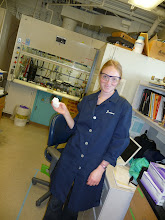Did you ever wonder what was actually in those artificial sweetener packets you might add to your coffee? The popular names on the market are Equal, Sweet N' Low and Splenda, although there are now many commercially available varieties.
Essentially, most of them contain some modified form of sugar that is not metabolized in the same way as standard table sugar (sucrose), thereby adding no caloric value to your diet.
Below are the chemical structures of the compounds present in the three artificial sweeteners mentioned above. Equal contains a mixture of aspartame, maltodextrin and dextrose.

Sweet N' Low is composed of saccharin, potassium bitartrate and dextrose.

Finally, Splenda simply contains a chlorinated derivative of sucrose called sucralose, in which three "OH" groups (hydroxyl groups) have been replaced by chlorine
 .
.



